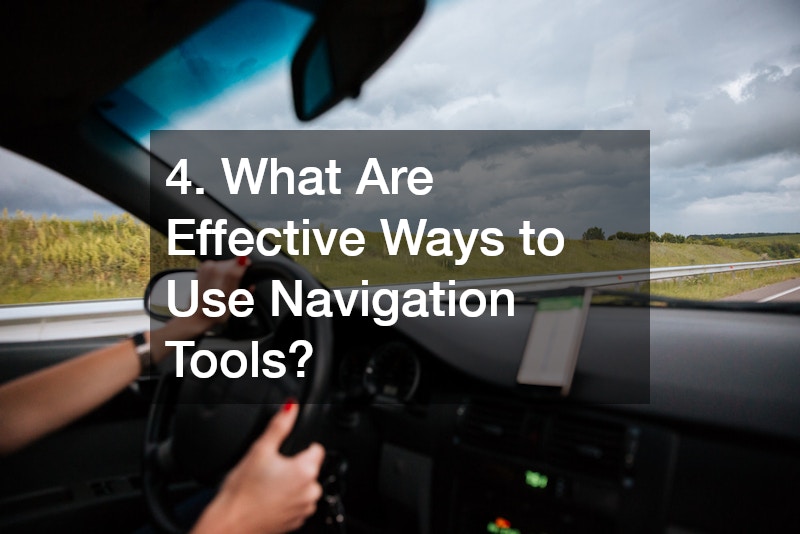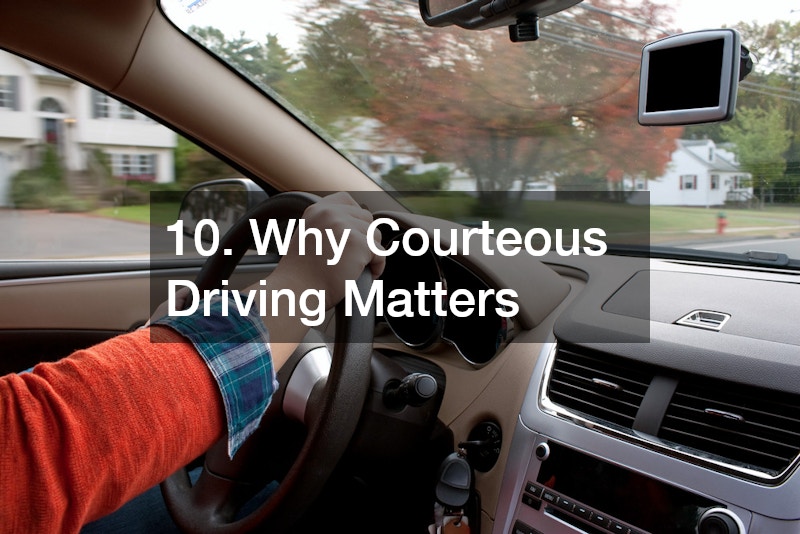Driving is more than just a means of getting from one place to another—it’s a responsibility. Every time a driver gets behind the wheel, they take on the duty of ensuring their own safety and the safety of others sharing the road. Good driving habits are the foundation of responsible driving, helping reduce accidents, extend vehicle life, and promote smoother traffic flow. Unfortunately, with the rise of distractions, fatigue, and poor driving etiquette, many motorists overlook the fundamentals that make driving safer and more efficient.
Maintaining good driving habits is essential not only for personal safety but also for preserving your vehicle and avoiding costly repairs or legal troubles. Consistency and awareness behind the wheel can dramatically lower accident risks. For example, defensive driving techniques can help anticipate hazards before they become problems, while proper vehicle maintenance ensures your car performs reliably in all conditions.
Beyond safety, practicing good driving habits fosters a sense of confidence and calm. Drivers who respect speed limits, avoid distractions, and remain courteous toward others tend to experience less stress and fewer incidents. This article explores ten good driving habits every motorist should practice, covering everything from staying focused and maintaining your vehicle to mastering navigation tools and managing fatigue. Whether you’re a new driver or a seasoned motorist, these habits can help you master the road and drive with confidence and responsibility.
1. How to Stay Focused While Driving

Focus is the cornerstone of safe driving. Distraction remains one of the leading causes of accidents, especially with the increasing prevalence of smartphones, infotainment systems, and in-car technology. To stay safe, maintaining full attention on the road should always be your top priority.
One of the best ways to develop focus is through driving classes or refresher courses. These classes not only enhance technical driving skills but also emphasize the mental discipline required to stay alert and avoid multitasking. They teach drivers how to scan their surroundings, anticipate the behavior of other motorists, and react calmly in unexpected situations.
Practical strategies for staying focused include:
- Eliminating distractions: Keep your phone out of reach and avoid eating or grooming while driving.
- Planning ahead: Set your GPS and adjust mirrors or climate controls before moving.
- Managing stress: Deep breathing or listening to calm music can help maintain focus during long or stressful drives.
Ultimately, staying focused is about developing a mindset of attentiveness and responsibility. Treat every drive as a serious task, not a routine chore, and you’ll naturally form better habits over time.
2. What Are the Best Practices for Driving at Night?
Driving at night presents unique challenges due to reduced visibility, glare from headlights, and increased fatigue. Truck driver training programs often emphasize nighttime driving because it requires sharper reflexes, better observation, and a disciplined approach to lighting and speed.
To drive safely at night:
- Use headlights properly: Keep headlights clean and ensure they’re aimed correctly. High beams should only be used on open roads without oncoming traffic.
- Reduce speed: Limited visibility means less time to react to obstacles, pedestrians, or animals.
- Increase following distance: Give yourself extra space to stop safely.
- Stay alert for impaired drivers: Nighttime hours see higher rates of drunk or drowsy driving—maintain vigilance.
Truck driver training also teaches the importance of rest cycles to combat fatigue. Even private motorists should schedule long night drives carefully and take breaks every two hours. Remember, safe night driving relies on visibility, patience, and awareness.
3. How to Implement Defensive Driving Techniques
Defensive driving is one of the most effective ways to prevent accidents and improve road safety. It involves anticipating potential hazards and reacting in ways that minimize risk. Many engine repair companies and fleet operators encourage their employees to complete defensive driving courses to reduce accident-related downtime and vehicle damage.
Key defensive driving techniques include:
- Keeping a safe distance: Maintain at least a three-second following distance.
- Avoiding aggressive drivers: Let tailgaters pass and never engage in road rage.
- Scanning ahead: Look several cars ahead to predict changes in traffic flow.
- Preparing for the unexpected: Assume other drivers may make mistakes, and have an escape route in mind.
Defensive driving isn’t just about reacting—it’s about prevention. By staying calm and observant, drivers can avoid situations that escalate into collisions. For both individuals and companies, these habits save lives, reduce insurance costs, and promote a safer driving culture. If you end up in a collision, you could look into selling cars for cash.
4. What Are Effective Ways to Use Navigation Tools?

Modern vehicles come equipped with GPS systems, and smartphone apps provide turn-by-turn directions. However, over-reliance on these tools can cause distraction or lead drivers into unsafe situations. Learning how to use navigation systems effectively is key.
Before starting your trip, set your route while parked. Many auto repair shops report that fender benders often occur when drivers try to adjust GPS settings mid-drive. Instead, review your route in advance, identify key turns, and use voice guidance to minimize visual distraction.
Other smart practices include:
- Keeping maps updated to avoid outdated directions or closed roads.
- Using real-time traffic data to avoid congestion or accidents.
- Avoiding last-minute lane changes prompted by sudden directions—missed turns can be corrected safely later.
Navigation tools should assist—not dominate—your driving experience. Always prioritize visual observation over screen instructions.
5. How to Maintain Proper Vehicle Speed
Maintaining the right speed isn’t just about avoiding tickets—it’s about staying in control. Driving too fast reduces reaction time, while driving too slowly can disrupt traffic flow and cause accidents. The key is balance.
According to experts at auto body shops, many collisions result from speed misjudgment, especially in poor weather or construction zones. Proper speed maintenance depends on awareness of your surroundings and adaptability.
Here are a few best practices:
- Follow posted speed limits, adjusting for weather and road conditions.
- Use cruise control on highways to prevent speeding.
- Avoid tailgating, which often pressures drivers into going too fast.
- Observe traffic flow—blend safely with the pace of other vehicles without exceeding limits.
By practicing mindful speed control, drivers maintain smoother handling, improve fuel efficiency, and enhance safety for everyone on the road.
6. How to Perform Routine Vehicle Maintenance
A well-maintained vehicle is a safe vehicle. Routine maintenance prevents mechanical failures that can cause accidents or breakdowns. Partnering with a trusted truck repair service or mechanic ensures that your car stays in top condition year-round.
Critical maintenance habits include:
- Checking tire pressure and tread regularly to maintain traction and fuel economy.
- Inspecting brakes for wear and tear—squealing or grinding noises mean it’s time for brake repairs.
- Changing oil and filters at recommended intervals.
- Monitoring fluid levels for transmission, coolant, and brake systems.
- Replacing wiper blades and keeping windshields clean for clear visibility.
Truck repair services emphasize preventive maintenance because larger vehicles face greater wear under heavy loads. The same principle applies to personal cars—addressing small issues early prevents expensive repairs later and keeps you safe on the road.
7. What Are the Signs of Driver Fatigue?

Driver fatigue can be as dangerous as drunk driving. It slows reaction time, impairs judgment, and increases the risk of nodding off at the wheel. Understanding the warning signs is crucial for preventing fatigue-related accidents and ensuring safety on the road. Many drivers underestimate how quickly exhaustion can take over, believing that rolling down the window or turning up the radio will help them stay awake. In reality, these tricks only mask the symptoms temporarily.
Some of the most common signs of driver fatigue include frequent yawning or blinking, difficulty focusing on the road, or drifting unintentionally from your lane. You might also find yourself missing road signs, exits, or turns because your concentration has diminished. Feeling irritable or restless behind the wheel is another red flag that your body and mind need rest. Ignoring these signs can have devastating consequences, as even a few seconds of microsleep at highway speeds can result in a serious collision.
When fatigue sets in, the safest decision is to pull over and rest. Local car paint service technicians often see vehicles damaged from fatigue-related accidents—drivers who simply fell asleep for a moment, only to wake up after losing control. To prevent fatigue from occurring in the first place, it’s essential to prepare properly for long drives. Get a full night’s rest before setting out, and take short breaks every two hours to stretch and refresh your mind. Avoid driving late at night or after a heavy meal, when drowsiness is most likely to strike. Staying hydrated and limiting caffeine intake can also help maintain steady energy levels, preventing sudden crashes in alertness.
Fatigue doesn’t just endanger the driver; it puts passengers, pedestrians, and other motorists at serious risk. Recognizing and acting on the warning signs early is not a sign of weakness—it’s a sign of responsibility. Making the choice to rest, even for a few minutes, can make the difference between reaching your destination safely or not arriving at all.
8. How to Properly Use Car Mirrors and Signals
Mirrors and signals are your primary communication tools on the road. Using them correctly ensures smoother traffic flow and prevents collisions.
Start by adjusting mirrors properly before driving. The rearview mirror should show a full view of the road behind, while side mirrors should minimize blind spots. Regularly glance at them—ideally every five to eight seconds—to stay aware of your surroundings.
Turn signals are equally important. They communicate intent and give other drivers time to react. Always signal before turning or changing lanes, not during the maneuver. Failing to use signals is one of the top causes of avoidable accidents.
Good mirror and signal habits demonstrate respect for others and create predictability, making roads safer for everyone.
9. How to Handle Bad Weather Conditions
Bad weather tests even the most experienced drivers. Rain, snow, fog, and ice all demand extra caution and adaptability.
When driving in rain, reduce speed and increase your following distance. Hydroplaning occurs when tires lose contact with the road surface, making steering and braking ineffective. Keep headlights on (but not high beams) for better visibility.
In snowy or icy conditions, accelerate and brake gently to maintain traction. Equip your vehicle with winter tires and check them before the season begins.
Fog requires slow, deliberate driving with low beams and steady focus on road markings. Never use high beams—they reflect off the fog and reduce visibility.
The key is to remain calm and patient. Rushing or overcorrecting in slippery conditions often leads to accidents. Practicing good weather-driving habits reduces the risk of losing control and keeps both you and your vehicle safe. If you end up in an accident, having a tow truck company on call is advisable.
10. Why Courteous Driving Matters

Courtesy is an often-overlooked component of good driving. Polite, respectful behavior on the road not only reduces stress but also prevents aggressive confrontations and accidents.
Good manners include allowing others to merge, avoiding tailgating, and yielding when necessary. A courteous driver follows rules not out of fear of tickets but because they value shared responsibility.
Studies show that aggressive driving—speeding, honking, or cutting off others—contributes to a significant percentage of road incidents each year. By contrast, courteous drivers help create smoother traffic flow and calmer environments for everyone.
Think of courteous driving as emotional intelligence behind the wheel. It’s about patience, respect, and empathy—qualities that transform every journey into a safer, more pleasant experience.
Mastering the road begins with mastering yourself. These ten good driving habits—staying focused, driving defensively, maintaining your vehicle, and treating others with respect—form the foundation of safe and responsible driving. They’re not complex or difficult, but they require consistency and awareness every time you drive.
By practicing these habits, you not only protect yourself but also contribute to a culture of safety that benefits everyone. Whether you’re taking driving classes to sharpen your skills, consulting truck repair services for maintenance, or simply learning to stay patient during rush hour, every action matters.
Safe driving isn’t just about avoiding accidents—it’s about creating a mindset of care, discipline, and responsibility that lasts a lifetime. The road is shared by millions, and the more good habits we practice, the safer it becomes for all.



